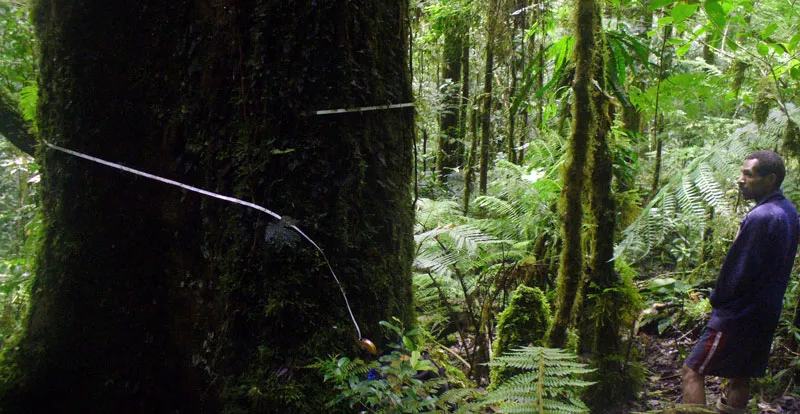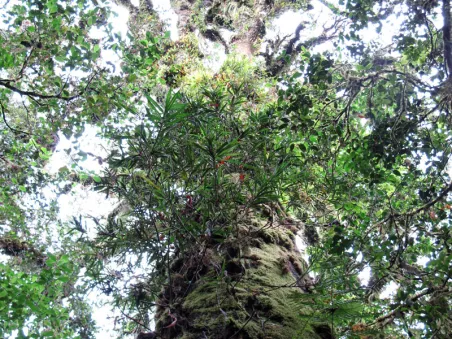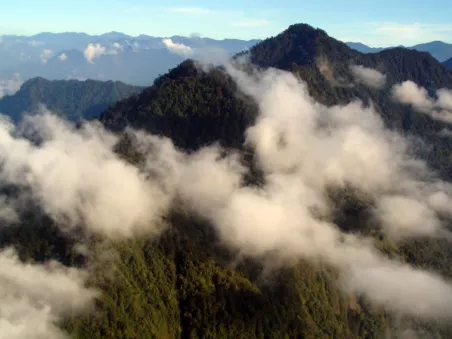International study reveals large trees in extreme altitudes of Papua New Guinea

The first field campaign surveying Papua New Guinea’s lush primary forests from the coast to clouds has revealed that the high mountain tops of the rugged country may house the largest trees ever recorded globally at such extreme altitudes.
These findings may force a re-think of what we know about the ideal environments for growing large trees.
The study, led by Dr. Michelle Venter, a postdoctoral fellow at the University of Northern British Columbia and involved The University of Queensland’s Dr. John Dwyer and James Cook University’s Professor Michael Bird.
The study was published today in the journal Global Change Biology.
In research that spanned three years, Dr. Venter conducted seven field expeditions in areas far from roads and villages, with the help of more than 70 field assistants from five forest-dependent communities working on slopes of up to 88 degrees spanning from the coastal lowland forests (50 metres) to upper montane tropical forests (3,100 m).
Unexpectedly, researchers found that the forest biomass had a major peak at altitudes of 2,400-3,100m, altitudes where forests fail to grow more than 15 m tall in other parts of the world.
“Upper montane forests are often typified as squat and gnarly,” Dr. Venter said. “Current thinking is that tall mountains make small trees.”
“However, we recorded more than 15 tree families with individuals growing from 30 to 40 m tall at extreme altitudes which brings this assumption into question.”
The tallest broadleafs recorded were a type of southern beeche (Nothofagus starkenborghii) (41 m) and an uncommon type of southern saspheras (Dryadodaphne crassa) (40 m), and the tallest conifers were an ancient pine-like tree (Dacrydium nidulum) (35 m) and a type of cypress (Libocedrus papuana) (31 m).
Dr. Dwyer said they became excited when they realized that climate conditions found on mountain tops of Papua New Guinea were remarkably similar to those of temperate maritime areas known to grow the largest trees in the world.
“Think of the foggy mid-west coast of the USA, which boasts the epically large coastal redwoods,” he said.
The world’s tallest known tree is a 115.8 m coast redwood found in California, and the second tallest reliably measured specimen, is a 99.82 m (327.5ft) mountain ash in Tasmania.
Coast redwoods occur in elevations up to about 920 m, while the Australian mountain ash occurs in cool mountainous areas to 1000 m altitude. This is considerably less than the PNG altitudes.
“Believe it or not why and how trees grow large is still under investigation, and reasons for the persistence of large old trees are still not clearly known,” said Dr. Bird.
Large trees are susceptible to many interacting threats, from disease to climate change and because of their size and age, they don’t adapt well to rapidly changing, human-modified environments.
“Near UNBC, in central interior British Columbia, we are gifted with unique pockets of inland rainforests that boast large old trees that are more typical of maritime climates, though we are 700 km from the sea,” added Dr. Venter.


